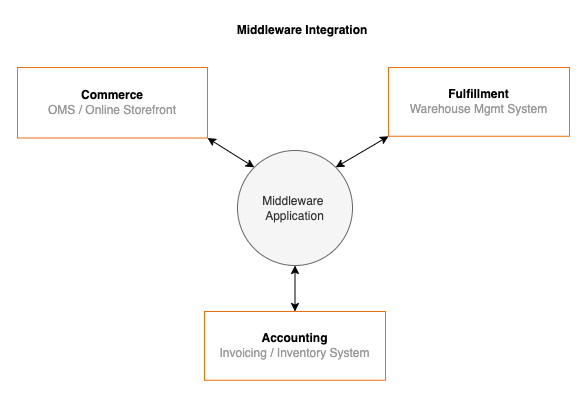Your options for website integrations
With exponentially growing numbers of third-party tools designed to enhance your website’s capabilities and improve business operations, integrations have become an essential part of any website strategy.
There are typically two approaches you can take when dealing with complex, highly-custom integrations:
- Use an API to connect your website directly.
- Use a middleware system as a connector between your website and other tools.
Here’s how to find which approach is right for you.
API Integration: Direct Website Connection

Consider the Application Programming Interface (API) to be a single, direct line of communication between your website and the tool you’ve integrated it with. Most tools — marketing technology integrations, order processing systems, even website platforms themselves — provide their own API.
The API gives your developer the instructions to connect two systems together to pass data or remotely execute commands in the other system. You see this everywhere these days. For example, enabling the Zoom plugin for our Slack application, made an API connection that allows us to initiate Zoom meetings from within Slack.
A few examples of APIs developers might use:
- Shopify Cart API
- Adobe Commerce Cart Total API
- Get a Node – Drupal CMS
From a web developer’s perspective, using an API is a common method of integration. For example, if a client is requesting we integrate their MailChimp email marketing tool with their Drupal CMS, we’ll write a Drupal module that uses the MailChimp API to create a new contact record when a webform is filled in on the website.
The benefit of the Direct API approach for development is that it provides direct, secure mechanisms for two entirely different systems to communicate and use each other's strengths.
However, an API is a “hard-coded” connection between systems. APIs get updated with some scheduled frequency, so you should have a plan for maintenance to support them.

